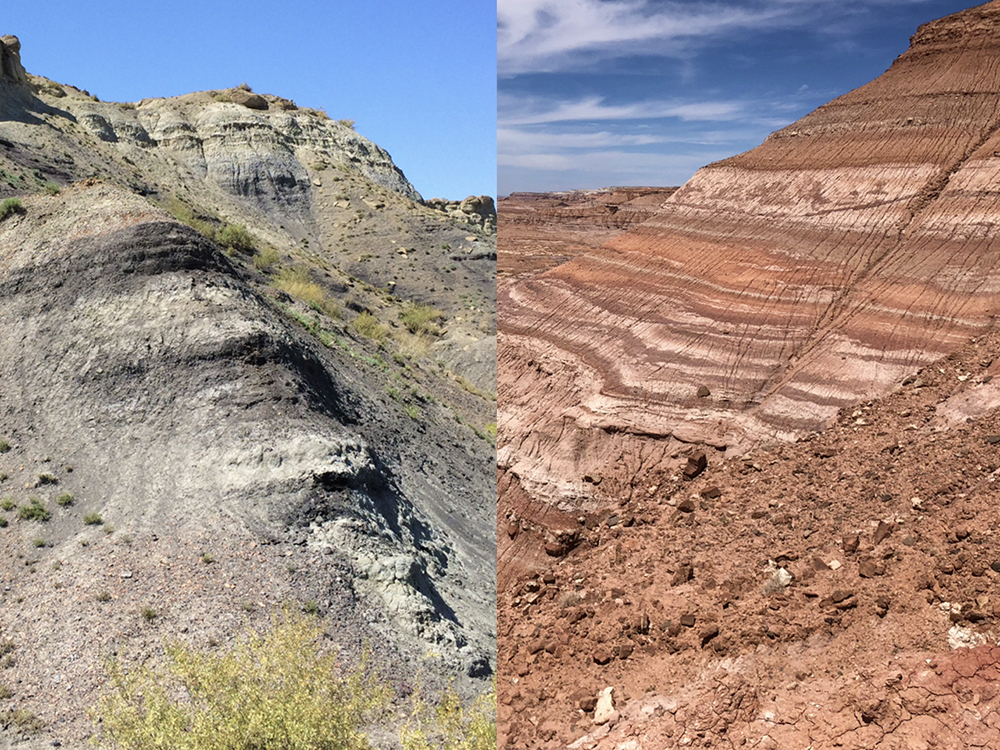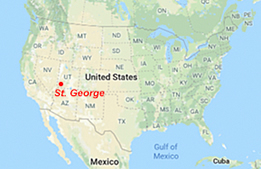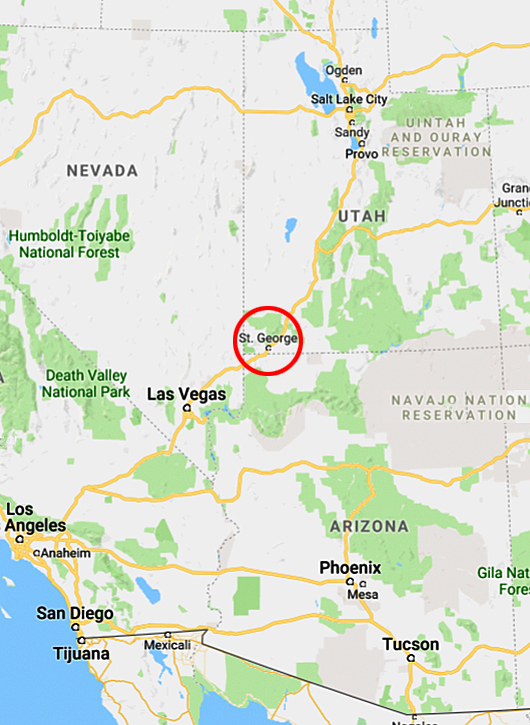Overview:
An
ICDP - EarthRates international workshop is being convened to
develop a
science plan and chart specific proposals for the Colorado Plateau
Coring Project 2 (CPCP 2) and Early Mesozoic, low- to
high-latitude
Coring Transect (EMCT). The overarching goal of CPCP 2 / EMCT is
to
obtain a
robust globally - exportable geochronology for the Late Triassic
and
Early Jurassic (237-174 Ma) that links together zircon U-Pb ages,
paleomagnetic polarity, atmospheric gas concentrations, climate
gradients, biotic change, and all major parameters of the orbital
pacing of climate (precession, eccentricity, obliquity,
inclination),
that will be invaluable to the general scientific community. This
is a contribution to IGCP Project 632: Continental Crises of the
Jurassic: Major Extinction events and Environmental Changes within
Lacustrine Ecosystems
|
CPCP
2
EMCT
Workshop
Fieldtrip
Announcment & Application
Support & Costs
Invitation Letter
Transportation & Lodging
Getting
to St. George, UT
|
|

|
Background:
Developed in the 1999, 2007, and 2009 ICDP-,
NSF-, and DOSECC-funded workshops
with over 100 participants from more than 11 countries, the
Colorado
Plateau Coring Project (CPCP) was designed as a focused coring
program
to address fundamental Earth System issues using the 100
million year
venue of the continental Triassic-Jurassic strata on the
Colorado
Plateau and adjacent areas. These include fundamental
questions of
astrochronology and Solar System chaos, Pangean
paleogeography,
paleoclimate, and biotic evolution, and constraints on the
processes
responsible for and consequences of the end-Triassic mass
extinction
event, the Toarcian ocean anoxic event and
Jurassic-Cretaceous biotic turnover events, and the resultant
establishment of dinosaurian dominance.
The 2009 workshop developed a plan for the ultimately
successful NSF and ICDP proposals for
Phase 1 of the CPCP - coring of the Triassic section at
Petrified Forest National Park, with coring completed in late
2013. We now are primed for CPCP phase 2, which will likely
involve coring the nearly complete Early Jurassic age section
in the Colorado Plateau, including expression of both the
end-Triassic mass extinction and the Toarcian event in the
Colorado Plateau strata, with stratigraphic overlap with CPCP
1 stratigraphy. Progress in astrochronology, celestial
mechanics, paleoclimate proxies, U-Pb geochronology, and
paleomagnetics have compelling case can be made to pair the
low-latitude Colorado Plateau site with a high-latitude,
continental site. That paired project is called the Early
Mesozoic, low- to high-latitude Coring Transect (EMCT) and
will interface with the Early Jurassic Earth System &
Timescale (JET) project in the UK.
|
|
Above
left: The
paleo-Arctic (~70 degrees N), cyclical, coal and black
shale-bearing, Late Triassic
age Haojiagou Formation in the Junggar Basin, Xinjiang, NW
China. Visible are 3+ laterally continuous cycles of lacustrine
black and gray mudstone containing lake-ice-rafted-debris. Above
right: The sub-tropical (~25 degrees N)
fluvio-lacustrine
zircon-bearing mudstones and sandstones of the Early Jurassic
Kayenta
Formation on the Colorado Plateau,
AZ, USA. The Junggar Basin sequence, extending as an apparently
continuous sequence from at least Norian of the Late Triassic
through
the Toarcian seems to record both obliquity- and precession-related
orbital pacing of climate as would be predicted on the basis of its
high latitude position, as well as abundant and well preserved
floral
remains, including abundant deciduous conifers. The Kayenta
Formation is
a red-bed sequence with abundant lacustrine beds producing a rich
tetrapod assemblage
that also has abundant datable
zircon-producing mudstone intervals and a recoverable magnetic
polarity
record. The Kayenta Formation is part of the Glen Canyon Group that
spans minimally the Hettangian to Toarcian (based on U-Pb
geochronology)
and which overlies the Late Triassic age Chinle Formation the lower
3/4
of which was cored by CPCP 1. |
Workshop
The 4-day workshop will be held in St. George, Utah, May
11-14, 2019 to develop scientific and logistical plans for coring
at
low and high-latitudes and interesections with the JET project.
The
workshop will review the overall context of the scientific issues,
focus on how selecting the optimal contextually driven locations
for
coring, articulation the primary and auxiliary scientific
objectives,
and establishment of collaboration and responsibilities, with an
outcome that will establish a draft science plan to be used in
producing specific funding proposals.
Members of the US and international scientific community
interested in
this project are invited to participate in this workshop and
fieldtrip.
Applicants are expected to prepare:
1) A single-page cv. that lists
contact details, education and appointments, and key
publications.
2) A single-page summary of your interests and intended
contribution to the project.
These should be in the form of a single PDF file that should
be emailed email to the workshop organizer by February 1, 2019
(Paul
Olsen, Lamont-Doherty Earth Observatory of Columbia,
polsen@ldeo.columbia.edu). Selected participants will be informed
by
mid-February of financial support and costs will be covered as far
as
possible by workshop funds, with the cost of the optional
fieldtrip to
be covered by the participants. Preference will be given to
scientists
from ICDP member countries, early-career scientists, and to those
whose
expertise and interests complement that of project initiators.
Participants can also be self-funded but must still prepare an
application as indicated above.
|
Fieldtrip
The
post-meeting fieldtrip (May 15-16) will examine
spectacular outcrops of largely continental Triassic-Jurassic
transition sequences
through Jurassic-Cretaceous sections on and around the Colorado
Plateau, especially in the St. George, UT and Tuba City, AZ
regions as
presently planned. We
will look at sites that exemplify the various units
that provide critical time control both in terms of zircon U-Pb
geochronology and lacustrine units potentially providing
lithostratigraphic control. Participants should plan
returning to St George, UT the evening of the 16th.
|
Announcement
and Application
You are invited to apply by 15
March 2019,
and will be notified if your application is successful as soon
as
possible. Please contact Paul E. Olsen
(polsen@ldeo.columbia.edu) with
your expression of interest and CV.
Co-conveners: Yanan Fang (Nanjing), Morgan Scahller
(Rensselaer Polytechnic Institute), Jessica H. Whiteside
(University of Southampton)
• Announcement as a .pdf can be
downloaded by clicking on this link: emct_cpcp_announcment.pdf
• Application deadline is March 15, 2019 (extended from
February 15).
• Official Language is English
• Please send the applications to: Paul E. Olsen polsen@ldeo.columbia.edu
• Use a subject line of “ECMT/CPCP-Application”
|
Support and
Costs
Selected participants will be informed by the end of March of
financial
support and costs will be covered as far as possible by workshop
funds,
with the cost of the optional fieldtrip to be covered by the
participants. Preference will be given to scientists from ICDP
member
countries, early-career scientists, and to those whose expertise
and
interests complement that of project initiators.
Those
not selected for ICDP or EarthRates support can nonetheless
participate
also but must still prepare an application as indicated above
but must
therefore be self-funded.
|
Invitation
Letter
An invitation letter will be sent to you upon request to: polsen@ldeo.columbia.edu
|
Transportation
and Lodging and Reimbursement
Transportation and lodging arrangements are the responsibility
of the
participants. However, there will a block of rooms reserved at
the
to-be-determined hotel (announcement soon) in St. George until
April
22, 2019. Selected participants should expect to be reimbursed
by ICDP
or EarthRates in a total amount to be determined.
|
Getting
to St. George and the symposium and the fieldtrip
Symposium:
The symposium will begin at 9:00 AM on May 11th at the Hilton
Garden Inn and end on the evening of May 14th. Therefore
if you are planning on just going on to the symposium, you
should arrive on May 10.
Fieldtrip
departure and
return locations:
The field trip will depart from and return to Hilton Garden Inn
at St.
George early on the morning of May 15th (time to be determined)
and
return the evening of May 16). Driving time on the fieldtrip is
considerable so plan accordingly.
St. George:
There are flights to St. George (SGU - airport code).
Las
Vegas, McCarran International Airport (LAS) is a often an
inexpensive
rout to which all major airlines fly. However its is about a 2 hr
drive
to St. Geoge. There is a convenient shuttle which costs
aproximately
$75.00 RT, the link to which is https://www.stgshuttle.com/
Some participants may want to rent a car in some other major city
within a few hours drive of Flagstaff and drive on their own. Las
Vegas, Nevada, and Salt Lake City, Utah. |

|
Left:
Map of United States with position of St. George, Utah. See
regional map below (from GoogleEarth).
|
|

|
|
____________________________________________________________________________________________________________________________________________
Other
Links
ICDP (https://www.icdp-online.org/home/)
EarthRates
(https://earthrates.org/)
St.
George Dinosaur Discovery Site at Johnson Farm (https://www.utahdinosaurs.com/)
NSF/ICDP Pangea coring workshop (https://www.ldeo.columbia.edu/~polsen/nbcp/pangeafinalreport.html)
CPCP web site: (https://www.ldeo.columbia.edu/~polsen/cpcp/CPCP_home_page_general.html)
CPCP
workshop 2007: (https://www.ldeo.columbia.edu/~polsen/cpcp/cpcp_07_results.html)
CPCP workshop 2009: (https://www.ldeo.columbia.edu/~polsen/cpcp/CPCP_09_workshop.html)
IGCP
632: (http://www.igcp632.org/)
|




